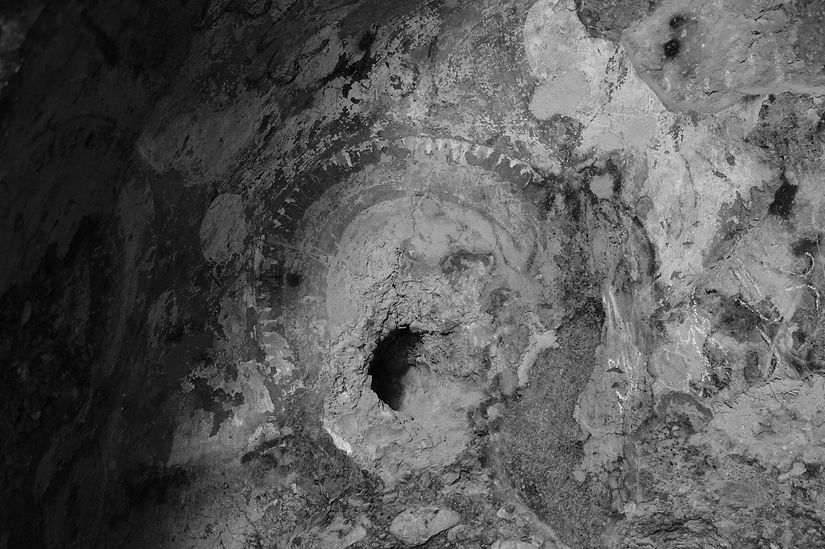Afghanistan Journal | Bamyan Province | May 2025
'The Hazarajat'

Located in the central highlands west of Kabul is the Hazarajat, homeland of the Hazaras, a people with Mongol heritage who practice Shia Islam rather than Sunni Islam like the majority of Afghanistan. The region has been greatly affected by the Taliban, both now and in their previous episode of power. The Hazaras are usually viewed as more liberal than other ethnic groups within the country, Hazara areas in Kabul are visibly more open with music, and both men and women wearing western style clothing. The Hazarajat region is where the city of Bamyan is located, famous for the now destroyed Buddhas. This photo journal was taken in Bamyan and the surrounding villages

The further into the highlands, the more apparent the last four decades of war are, the landscape is littered in tanks and military hardware, and buildings usually made of mud bricks are either covered in bullet holes or partially destroyed. Pictured above is a Soviet T-54 tank sat abandoned in a farmer’s grazing patch in Tuti Koshteh, near Bamyan. The tank would have been used in the early years of the Soviet Afghan war.

Hazaras have historically been persecuted in Afghanistan, from the rein of Amir Abdur Rahman in the 19th century to Al-Qaeda and the Taliban, the Hazaras have seen enslavement, displacement and massacres. Since the return of the Taliban in 2021, Hazaras have faced economic restrictions and land seizures forcing many to flee the country. Hazara women face more severe restrictions and harassment by the Taliban. Currently the Taliban government ruling Afghanistan contains no Hazaras within its members, despite making up around 10-20% of the Afghan population.

Along the highways leading south to Kandahar and Ghazni, and west leading to the Hazarajat, village cemeteries can be seen from along the roadside with flags waving in the wind. The white flags mark the graves of the Taliban, many of which were fighters who fought against the United States. The villages are usually ethnically Pashtun and have acted as Mujahadeen and later Taliban strongholds throughout each military intervention in Afghanistan and are usually hostile to those entering who are not from the village.

Many Afghans like to visit the highlands to see the mountains and where summer temperatures are far cooler. Pictured above is a women dressing down from her niqab into just a hijab along the highway through the extremities of the Hindu Kush mountains to Bamyan. Many of the mountains will remain snow-capped throughout the year.

A Taliban guard looking over the Bamyan Valley atop of the City of Screams, the site of a Mongol led massacre in 1221 during Genghis Khan’s empire.

Ruins of a Soviet tank in a field, Bamyan.

The ruins of the Bamyan Buddhas. Before Islam came to Afghanistan during the Arab conquests of the 7th century, Hinduism, Zoroastrianism and Buddhism were the dominant religions within the region. In the central highlands, Buddhism was the main religion, and in the 6th century enormous statues of Buddhas were carved into the mountain sides overlooking Bamyan. The largest Buddha was 55 meters tall, with the second one being 38 meters tall. It was in 2001 during the Taliban’s first period of governance when the Buddhas were destroyed, as the group deemed them ‘unislamic’ and wanted to ensure nobody could admire or worship them. Under command of the then Taliban leader Mullah Omar, they were to purge all Buddhist and pre-Islamic culture and history from the country, with an emphasis on removing any statues depicting humans.

A Taliban guard keeping watch of one of the Buddhas.

Inside the small Buddhist temples next to the Buddhas in the cliff face, any ancient paintings depicting human faces have either been shot at or destroyed using tools. Much of this damage was from 2001. Above is a painting of what was Buddha’s face on the walls.

Although Archaeologists and conservationists tried to restore the Buddhas, reconstruction was deemed too difficult. Efforts, including that of UNESCO, shifted to securing the cliff face and preserving what remains. Since the Taliban takeover all efforts have been put on hold indefinitely. Above are the shelters containing the fragments of the Buddhas, guarded by two Taliban members.

In front of the remains of the large Buddha, a Hazara child perches by the side of a destroyed tank.

Disused tanks leftover from the Soviet Afghan war can be seen scattered all over Bamyan. Above, a teenager is standing next to another Soviet T-54, this one is iconic however as he explains. The tank has been painted red and polka dots have used to decorate the dome and turret of the vehicle, a local artist has apparently done this. In some areas of Afghanistan, leftover war wreckage is painted and decorated to remove the grim sight of the conflict from the scenery.

A Taliban official standing on a U.S. built bridge watching children play on the banks.

With the return of the Taliban to power, the Hazaras and the region face a future of uncertainty, and fear hangs in the air for many. Multiple human rights groups have warned that policies of ethnic cleansing and systematic displacement of Hazaras may return to the region once again in a bid to further erode their culture and identity. And although the Taliban have said they will protect pre-Islamic heritage of the country, there remains a very real threat that the destruction of historic artefacts and sites may continue just as it did in 2001. As for now, the world will have to watch and wait to see what happens to the Hazaras under the Taliban’s renewed totalitarian rule.